IndiaWilds Newsletter Vol. 13 Issue VIII
ISSN 2394 – 6946
Climate Change: Curse of Human Race
There is no pride in burning down one’s own house. We don’t expect an intelligent man to do it. Nevertheless, we the humans are doing exactly that. We are destroying our home, the Planet Earth. It has been proven now beyond doubt that human influence has warmed the climate at a rate that is unprecedented in at least the last 2000 years. The scale of changes that we humans have caused to the climate system as a whole, and the present state of various aspects of the climate system are simply unprecedented over many centuries and even many thousands of years.
Human-induced climate change is already affecting many weather and climate extremes in every region across the globe. Evidence of observed changes in extremes such as heatwaves, heavy precipitation, droughts, and tropical cyclones, and, in particular, their attribution to human influence, has strengthened since the Fifth Assessment Report (AR5) of IPCC. This and many more such alarming findings have been released in the new bombshell report of Intergovernmental Panel on Climate Change (IPCC) [IPCC, 2021: Summary for Policymakers. In: Climate Change 2021: The Physical Science Basis. Contribution of Working Group I to the Sixth Assessment Report of the Intergovernmental Panel on Climate Change [Masson- Delmotte, V., P. Zhai, A. Pirani, S. L. Connors, C. Péan, S. Berger, N. Caud, Y. Chen, L. Goldfarb, M. I. Gomis, M. Huang, K. Leitzell, E. Lonnoy, J. B. R. Matthews, T. K. Maycock, T. Waterfield, O. Yelekçi, R. Yu and B. Zhou (eds.)]. Cambridge University Press. In Press.]
The team of researchers, from the Intergovernmental Panel on Climate Change (IPCC), poured over 14000 scientific papers over eight years to arrive at this path breaking Sixth comprehensive assessment report (AR6). The Working Group I contribution to the Sixth Assessment Report is the most up-to-date physical understanding of the climate system and climate change, bringing together the latest advances in climate science, and combining multiple lines of evidence from paleoclimate, observations, process understanding, and global and regional climate simulations.

Global surface temperature change relative to 1850-1900. (a) Change in global surface temperature (decadal average) as reconstructed (1-2000) and observed (1850-2020); (b) Change in global surface temperature (annual average) as observed and simulated using human & natural factors and only natural factors (both 1850-2020). (Source: Figure SPM.1 from AR6 WGI Summary of Policymakers, courtesy IPCC)
The anecdotal observations of common men and women, who have experienced higher heat, drought, higher precipitation, increase in frequency of sudden extreme weather events like cyclones etc over the last few decades, have been confirmed, by scientists in this report, as linked to climate change induced by human actions.
In the Paris Agreement the central aim was to strengthen the global response to the threat of climate change by keeping a global temperature rise this century to well below 2 degrees Celsius above pre-industrial levels and to pursue efforts to limit the temperature increase even further to 1.5 degrees Celsius. However, the Sixth comprehensive assessment report (AR6) finds that the 1.5 degrees Celsius global ambient temperature increase over preindustrial levels will be reached earlier in 2040 instead of the predicted year 2050.
Global warming: Drought & Rains
The IPCC scientists report with high degree of confidence that the Global surface temperature has increased faster since 1970 than in any other 50-year period over at least the last 2000 years. It also states with medium degree of confidence that the “Temperatures during the most recent decade (2011–2020) exceed those of the most recent multi-century warm period, around 6500 years ago [0.2°C to 1°C relative to 1850– 1900]. Prior to that, the next most recent warm period was about 125,000 years ago when the multi-century temperature [0.5°C to 1.5°C relative to 1850–1900] overlaps the observations of the most recent decade”.

Global surface temperature changes, assessed based on multiple lines of evidence, for 20-year time periods and the five illustrative emissions scenarios. Temperature differences relative to the average global surface temperature of the period 1850-1900 are reported in °C. Image: Table SPM.1 from AR6 WGI Summary of Policymakers, courtesy IPCC.)
We the people of India are increasingly facing extreme weather events like heatwaves, rains, landslides, and cyclones. The IPCC data is ominous in its predictions. We have to be very worried as with every additional increment of global warming, changes in extreme weather events becomes larger. “Every additional 0.5°C of global warming causes clearly discernible increases in the intensity and frequency of hot extremes, including heatwaves (very likely), and heavy precipitation (high confidence), as well as agricultural and ecological droughts in some regions (high confidence). Discernible changes in intensity and frequency of meteorological droughts, with more regions showing increases than decreases, are seen in some regions for every additional 0.5°C of global warming (medium confidence). Increases in frequency and intensity of hydrological droughts become larger with increasing global warming in some regions (medium confidence). There will be an increasing occurrence of some extreme events unprecedented in the observational record with additional global warming, even at 1.5°C of global warming. Projected percentage changes in frequency are higher for rarer events (high confidence).”
Millions of Indians are dependent on agriculture. As per India Economic Survey 2018, more than 50% of Indias work force was employed in agriculture and the sector contributed to 17-18% of India’s GDP. So any extreme weather event like drought due to climate change has the potential to cause unprecedented upheavals in our daily lives as well as create social strife.
Along with drought, climate change also causes heavy rains. “At the global scale, extreme daily precipitation events are projected to intensify by about 7% for each 1°C of global warming (high confidence). The proportion of intense tropical cyclones (categories 4-5) and peak wind speeds of the most intense tropical cyclones are projected to increase at the global scale with increasing global warming (high confidence).” In India, in the last few years we are roughly facing more than one cyclonic storms every year. Cyclonic storms in summer was earlier unheard off. However, in the last few years, cyclones in April and May has become regular. These cyclones are causing unprecedented loss of infrastructure, inundation and Governments are forced to undertake massive evacuation of people to storm shelters. There is huge financial burden as well as immense human suffering.
Arctic thawing & loss of Sea ice:
Scientists also state with a high degree of confidence that between 2011–2020, the annual average Arctic sea ice area reached its lowest level since at least 1850. While predicting the comparison over a longer period of time, the report states with medium confidence that “the late summer Arctic sea ice is smaller than any time in the last 1000 years”. Similarly, scientists have also found that all the worlds glaciers are retreating. “The global nature of glacier retreat, with almost all of the world’s glaciers retreating synchronously, since the 1950s is unprecedented in at least the last 2000 years (medium confidence)”.

September Arctic sea ice area in 106 km2 based on CMIP6 model simulations. Very likely ranges are shown for SSP1-2.6 and SSP3-7.0. The Arctic is projected to be practically ice-free near mid-century under mid- and high GHG emissions scenarios. (Image: Figure SPM.8b from AR6 WGI Summary of Policymakers, courtesy IPCC.)
Retreating glaciers have a huge impact on our lives. Many of our rivers and streams have originated from these glaciers. With the retreating glaciers, often rivers change course or even dry up. The lifestyles of people dependent on the glacier melt water and rivers is undergoing huge changes. Without the glacial melt water, some of the local communities in Ladakh in India and in other places find it difficult to survive. They are the ones who are the first to notice any changes. Scientists take years to research and then get their paper peer-reviewed and published and still many more years before it gets worldwide attention of IPCC and the world at large. Hence, it is important to note that there are people who are suffering immensely due to climate change and this warning by IPCC scientists through the AR6 report is to be actioned upon.
Climate Crisis: Sealevel rise
It has long been suspected that the human induced climate change has resulted in massive impact on our oceans. Pollution is easily visible. It is also easy for any lay man to correlate between a warming arctic, ice loss and sealevel increase. Scientists have now with a high degree of confidence state that “heating of the climate system has caused global mean sea level rise through ice loss on land and thermal expansion from ocean warming. Thermal expansion explained 50% of sea level rise during 1971– 2018, while ice loss from glaciers contributed 22%, ice sheets 20% and changes in land water storage 8%. The rate of ice sheet loss increased by a factor of four between 1992–1999 and 2010–2019.” As a result, ice sheet and glacier mass loss were the two dominant contributors to global mean sea level rise during 2006-2018.
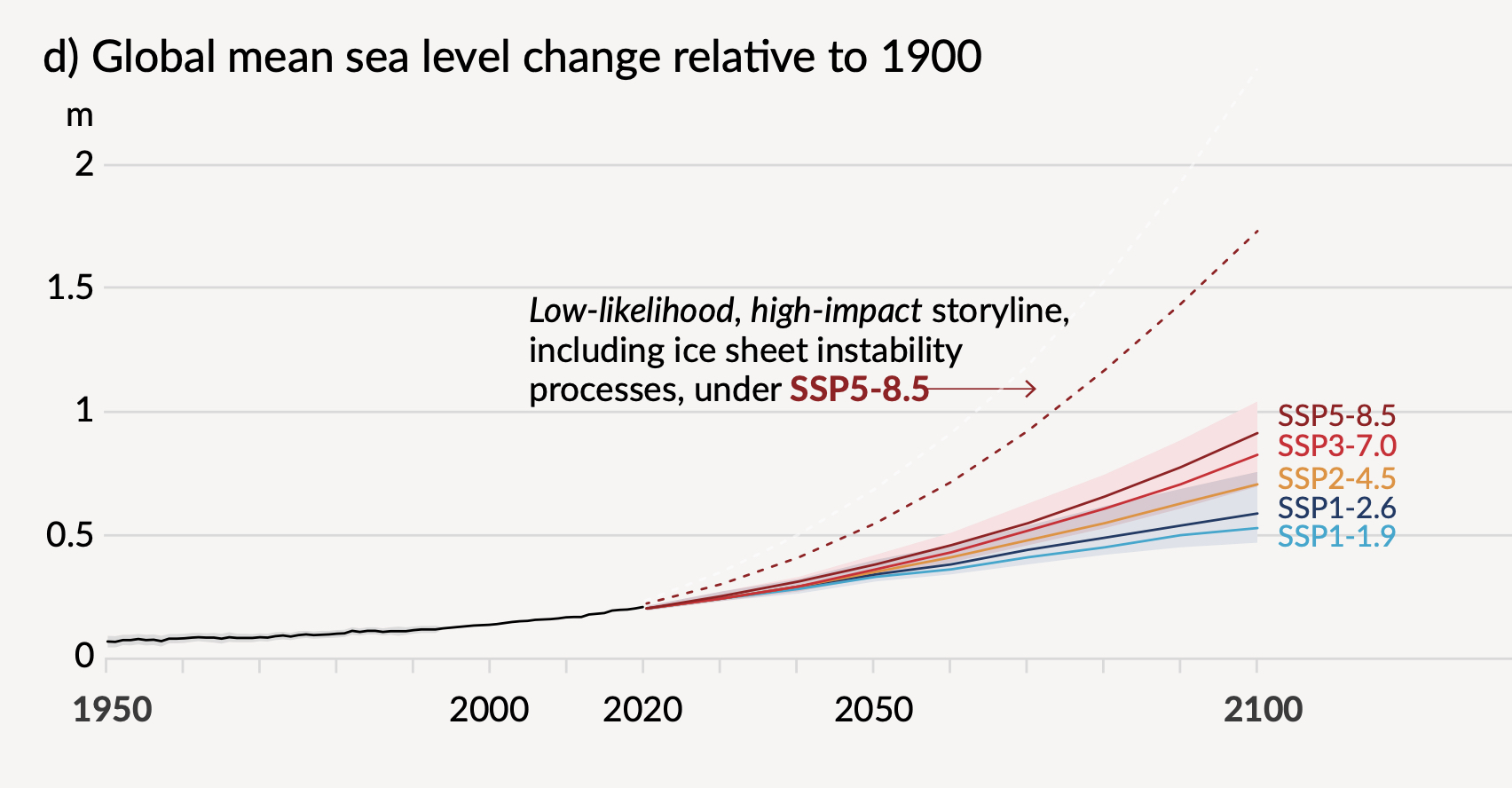
Global mean Sea level change in meters relative to 1900. The historical changes are observed (from tide gauges before 1992 and altimeters afterwards), and the future changes are assessed consistently with observational constraints based on emulation of CMIP, ice sheet, and glacier models. Likely ranges are shown for SSP1-2.6 and SSP3-7.0. Only likely ranges are assessed for sea level changes due to difficulties in estimating the distribution of deeply uncertain processes. The dashed curve indicates the potential impact of these deeply uncertain processes. It shows the 83rd percentile of SSP5-8.5 projections that include low-likelihood, high-impact ice sheet processes that cannot be ruled out; because of low confidence in projections of these processes, this curve does not constitute part of a likely range. Changes relative to 1900 are calculated by adding 0.158 m (observed global mean sea level rise from 1900 to 1995–2014) to simulated and observed changes relative to 1995–2014 (Image: Figure SPM.8d from AR6 WGI Summary of Policymakers, courtesy IPCC.)
Given the rapid pace of industrialization in the 20th century and 21st century, one can easily use one’s logical faculties to deduct that the sealevels increased rapidly in the past century. Even during our lifetime we have seen many islands swallowed by the sea. This conventional wisdom has now been confirmed by the AR6 report authors. “Global mean sea level has risen faster since 1900 than over any preceding century in at least the last 3000 years (high confidence). The global ocean has warmed faster over the past century than since the end of the last deglacial transition (around 11,000 years ago) (medium confidence)”.
The Global mean sea level increased by 0.20m or 7.8 inches m between 1901 and 2018. The average rate of sea level rise was 1.3 mm/year between 1901 and 1971. It then increased to 1.9 mm/year between 1971 and 2006. It further increased to “3.7 [3.2 to 4.2] mm yr–1 between 2006 and 2018 (high confidence).” The AR6 assessment report now finds that “Human influence was very likely the main driver of these increases since at least 1971”.
The increase in sea levels will have disastrous consequences for mankind. Most of our low-lying areas, atolls, coastal cities like Mumbai, Chennai, Kolkata will be massively impacted due to the increase in sea levels. Today our scientists are virtually certainthat global mean sea level will continue to rise over the 21st century. If the world wakes up now and contains the green house gas (GHG) emissions to a very low level (SSP1-1.9), relative to 1995-2014, then the likely global mean sea level rise by 2100 is between 11 to 21 inches. If the GHG emissions scenario is (SSP1-2.6), then the likely mean sea level increase would be 0.32-0.62 m or 12.5 inch to 24.4 inch ie. from 1feet to 2 feet level.
The mean sea level rise will be 0.44-0.76 m or 17 to 29 inches under the intermediate GHG emissions scenario (SSP2-4.5), and 0.63-1.01 m or 2 feet to 3 feet ¾ inches under the very high GHG emissions scenario (SSP5-8.5). Despite these scenario building, the report states that we need to be prepared for a very high greenhouse gas emissions scenario. “Global mean sea level rise above the likely range – approaching 2 m by 2100 and 5 m by 2150 under a very high GHG emissions scenario (SSP5-8.5) (low confidence) – cannot be ruled out due to deep uncertainty in ice sheet processes.”
We the present generation will long be dead and gone but our actions will continue to reverberate around the world for time immemorial. Sea level is going to rise for centuries to millennia due to continuing deep ocean warming and ice sheet melt and will remain elevated for thousands of years. “Over the next 2000 years, global mean sea level will rise by about 2 to 3 m if warming is limited to 1.5°C, 2 to 6 m if limited to 2°C and 19 to 22 m with 5°C of warming, and it will continue to rise over subsequent millennia (low confidence). Projections of multi-millennial global mean sea level rise are consistent with reconstructed levels during past warm climate periods: likely 5–10 m higher than today around 125,000 years ago, when global temperatures were very likely 0.5°C–1.5°C higher than 1850–1900; and very likely 5–25 m higher roughly 3 million years ago, when global temperatures were 2.5°C–4°C higher (medium confidence).”
Together with sudden climate change induced cyclonic storms, storm surge and shifting ocean currents, many of our cities are now facing sudden and unprecedented flooding. The IPCC report warns “in some areas, coastal flooding that occurred once a century in the recent past could be a yearly event by 2100.” The flooding will impact our coastal infrastructure. Many of our powerlines, telecom cables and roads will be inundated and rendered non-functional. The power and telecom cables were not designed to be submerged. It would cause unprecedented disruption not only to coastal communities but also to places far from the sea.
The face of earth will be changed forever. Many of our cities and megacities of today will be under water forever. Many more stories similar to that of Atlantis going under water is going to be come true. Man, who thought he can control nature by use of technology, incurs the wrath of nature Gods and entire civilisations go under water. We the people of earth, we only have this moment to reverse our actions. Tomorrow will be too late. Our Governments are still jostling with each other to shirk responsibilities and trying to lessen their own actions. Many are claiming big changes even though the climate change mitigation efforts are mostly in letter and not in spirit. If this IPCC report doesn’t shake us up from our slumber, then history will never forgive us.
Gir National Park: The only abode of Asiatic Lions
Conservation News:
Single Use Plastic items to be phased out by July 2022
Joint Elephant and Tiger population estimation in 2022
India extends full support to UK for a successful COP26 in Glasgow
India ratifies Kigali Amendment to Montreal Protocol on Ozone layer depleting substances
India ratifies Kigali Amendment to Montreal Protocol on Ozone layer depleting substances
Equipment Discussions:
Canon launches compact & lightweight XF605 4K UHD Professional Camcorder with Broadcast-Quality Features
Canon has launched a 4k UHD professional camcorder XF605.
Canon Expands 8K Broadcast Lens Lineup with new 10×16 KAS S 8K UHD Portable Zoom Lens
Canon has announced the launch of an 8K resolution 10×16 KAS S – a new portable zoom lens for 8K broadcast cameras featuring a 1.25-inch sensor. According to Canon, the new lens was designed to meet the ever-growing demand in recent years for ultra-high-resolution video production equipment, especially in such fields as sports broadcasting and documentary filmmaking. The new 8K lens also cements Canon’s commitment to next-generation and innovative lens technology for a variety of content creation industries.
Canon EOS R5 + Atomos Ninja V+ now record 8K ProRes Raw
Earlier this year Atmos had announced that Ninja V+ monitor recorder will be able to record 8K ProRes Raw from Canon EOS R5. Now the firmware upgrade is available and one can start shooting in 8K ProRes Raw at 8K 30fps.
The ProRes Raw will give greater flexibility in post production than the existing Canon Raw lite codec. One can easily change the White balance and ISO in postproduction. This promises to be very helpful in reducing the overheating issue faced by Canon EOS R5. This will hopefully increase the adoption of the EOS R5 among filmmakers.
The Atomos Ninja V+ costs 1499 US Dollars. So this external ProRes Raw recording won’t come cheap. For those with existing Ninja V+ units, it is a great boon.
B&H Link to Atomos Ninja V+: https://www.bhphotovideo.com/c/produ…1112239/SID/EZ
For more details click below link:
Natural History
COUNTRY NOTEBOOK: M. Krishnan: ‘Lone sentinel of the puddles‘ shared By Saktipada Panigrahi
https://www.indiawilds.com/forums/showthread.php?8852-Country-notebook-m-krishnan&p=55019#post55019
TEDx Talk: Learning from India’s Wilds
A recent TEDx talk by Sabyasachi Patra explores the strategies wildlife use in their life and death battles. These learnings can help we humans in improving our lives.
Photography Tips – Learning Exposure
To make photography learning easier, we are creating a photography tutorial video series. The first part of photography tips is on learning exposure. Check it out in this link: https://youtu.be/PT3vvNIJx1g
Wildlife Photography
Tiger by Sabyasachi Patra
https://www.indiawilds.com/forums/showthread.php?19981-Tiger-closeup
Chinkara by Shyamala Kumar
https://www.indiawilds.com/forums/showthread.php?19968-Chinkara-and-Dry-Grass
Elephants at Munnar by V S Sankar
https://www.indiawilds.com/forums/showthread.php?19965-Elephants-at-Munnar!
Black-capped-Kingfisher by Mrudul Godbole
https://www.indiawilds.com/forums/showthread.php?19974-Black-capped-Kingfisher
Eelscape by Samrat Sarkar
https://www.indiawilds.com/forums/showthread.php?19975-Eelscape
Velvet Ant by Prajwal Ullal
https://www.indiawilds.com/forums/showthread.php?19977-The-velvet-beauty
Spare a Thought
This is the 152nd issue of IndiaWilds. An adolescent tiger on its prowl adorns the cover page of this issue.
Beauty, grace, power, awe… these and many other emotions are aroused whenever I see a tiger in the wild. Unfortunately, these days one can’t help but think about the future of our wilderness and wildlife. There was a time when wildlife was numerous and human habitations were few and scattered around. The strength and power of the tiger was rightly recognised by humans and we see the tiger as the vehicle of our Goddess. However, scientists are now unanimous in their assessment that the destructive hand of man has changed the face of planet earth over the last 2000 years. Today human induced climate change has massive consequences for our natural world as well as ourselves. With the rapid increase in ambient temperatures, we are finding it difficult to live without air conditioners. How will our tigers cope up?
Diversion of forests for various industrial projects is shrinking the tiger habitat. To make matters worse, the destruction of forests have also reduced the percolation of waters and natural streams and fresh water sources are drying up at a rapid rate. Tigers dispersing from protected areas to find a territory for themselves are being mowed down by speeding vehicles in the ill-planned roads that cut through our forests. Poaching is threatening the food supply of tigers and other carnivores. In this scenario how long can our National animal survive in the wild is anyone’s guess. As we visit various national parks and sanctuaries and enjoy watching the grace of this majestic animal, it has become more important than ever to raise our voice to protect our last wilderness and wildlife. Else history will not be kind to us.
Touche.
http://www.indi
To post in the IndiaWilds forums, you can register free of cost using your Full Name as user id at:
http://www.indiawilds.com/forums/register.php
If you are already a member of IndiaWilds and have forgotten your user id and/or password you can mail to:
administrator@indiawilds.com
Regards,
Sabyasachi Patra
Profile | Contact Us | Facebook | Diary | Equipment reviews | Forums | IndiaWilds You Tube Channel
Please post your views and feedback in the comments below.
- GoPro Hero 12 Black - 6 September,2023
- Leopards: The Last Stand - 2 July,2023
- Drifting in the Waters of Sundarbans - 26 March,2023

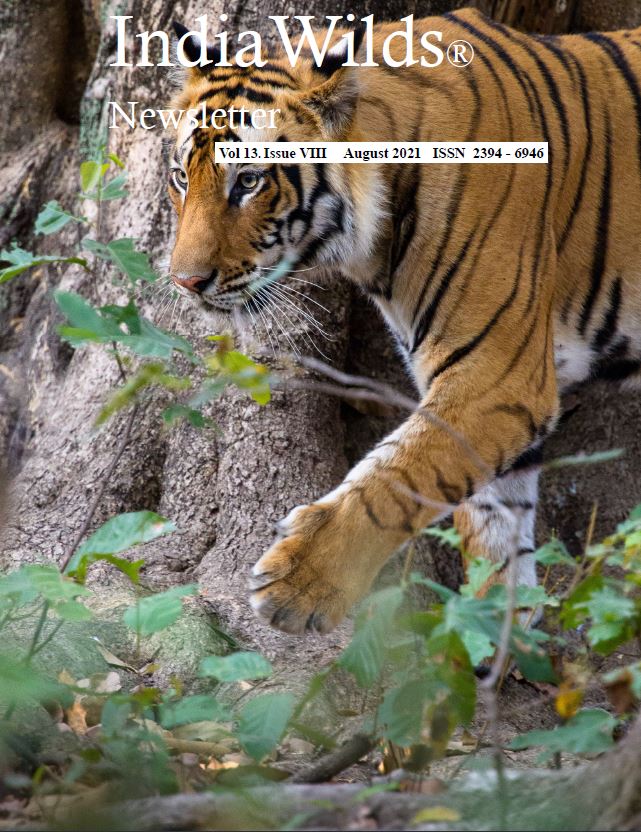



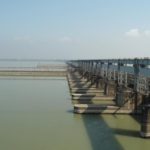
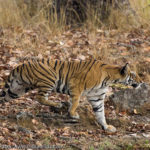

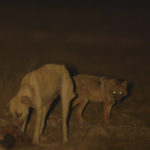




Leave a Reply